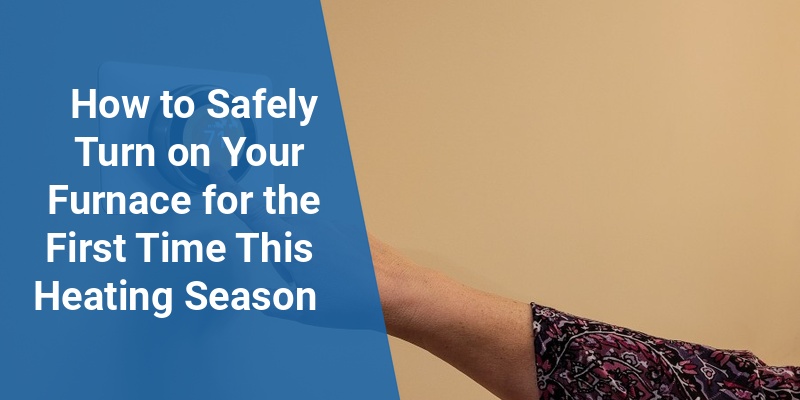Starting your furnace for the first time in the heating season is a critical task that ensures your home stays warm and safe throughout colder months. Proper preparation and careful steps can prevent damage to your system and enhance its efficiency. This guide provides detailed instructions and expert tips to help American homeowners confidently turn on their furnace for the first time.
| Step | Action | Description |
|---|---|---|
| 1 | Inspection | Check furnace components, vents, and filters for cleanliness and damage |
| 2 | Power and Gas Supply | Ensure electrical power and gas supply lines are safely connected and functioning |
| 3 | Thermostat Setup | Set thermostat to an appropriate temperature for initial furnace start-up |
| 4 | Start-Up Procedure | Follow manufacturer’s recommended steps to turn on the furnace |
| 5 | Monitoring | Watch for unusual noises, smells, or operational issues after starting |
Preparing Your Furnace Before the First Start of the Season
Preparation is key to ensuring your furnace operates efficiently and safely at the start of the heating season. Begin by powering off the furnace and inspecting critical components. Examine the air filters for dirt and debris; a clogged filter reduces airflow and strains the system. Replace filters if necessary to maintain indoor air quality and system efficiency.
Next, inspect the vents and ducts for blockages or damage. Clear any dust, nests, or debris that may have accumulated during the off-season. This step ensures proper airflow and prevents potential hazards like carbon monoxide buildup.
Check the furnace cabinet and surrounding area. Remove any combustible materials nearby. Verify that the flue pipe is secure and free of obstructions for safe exhaust of combustion gases.
Ensuring Safe Power and Gas Supply Connection
Once physical inspection is complete, confirm that the furnace has a safe and steady power supply. Check the circuit breaker or fuse box to ensure the furnace’s electrical circuit is intact and switched ON. For gas furnaces, inspect the gas line connection and ensure the gas valve is turned on. If you smell gas or detect a leak, stop and call a professional immediately.
It’s vital to understand the importance of gas safety. Never attempt to fix or alter gas lines yourself unless you are a licensed technician. Proper connection and functioning of the gas supply affect furnace performance and household safety.
Setting the Thermostat Correctly for Initial Furnace Start-Up
Before switching on your furnace for the first time, adjust the thermostat to a setting higher than the current room temperature. This signals the heating system to activate. Use a programmable or digital thermostat if available, as these devices offer enhanced control and energy efficiency throughout the season.
Call 888-906-9139 for Free Local HVAC Quotes – No Obligation, Just Savings!
A well-set thermostat not only initiates furnace operation but also allows you to observe if the system responds properly without immediate overshoot. Gradual warming helps ensure that all furnace components reach operating temperature safely.
Step-by-Step Procedure to Turn On Your Furnace
Follow the recommended start-up steps carefully to avoid damage and ensure safety:
- Restore power to the furnace by turning on the circuit breaker or switch.
- Open the gas valve
- Set the thermostat
- Listen for the furnace ignition process. In modern furnaces, the blower and ignition system should activate smoothly.
- Check the pilot light or electronic ignition. Confirm the burner flames ignite steadily and consistently.
- Observe the blower fan
If the furnace fails to start, consult your manual for troubleshooting or contact a certified HVAC professional for assistance to avoid safety risks.
Monitoring Furnace Operation After Initial Start
Careful monitoring during initial operation is essential. Pay attention to any unusual noises such as banging, clanking, or whistling, which may indicate mechanical issues. Also, detect any strange odors like burning plastic or gas smells, requiring immediate shutdown and expert evaluation.
Evaluate the warmth distribution throughout the house to ensure the furnace and ductwork are functioning correctly. Confirm that the thermostat cycles on and off normally and that the unit maintains set temperatures efficiently.
Regular seasonal maintenance checks after the initial start will prolong furnace life, improve energy efficiency, and reduce breakdowns.
Common Troubleshooting Tips for First-Time Furnace Start
- Furnace Won’t Start: Verify power supply, check thermostat batteries, and ensure the gas valve is open.
- Pilot Light Won’t Stay Lit: Inspect for dirt or debris blocking the pilot assembly. Professional cleaning or replacement might be needed.
- Furnace Cycles On and Off Rapidly: Check air filter condition and thermostat placement for drafts or inaccurate temperature sensing.
- Unusual Noises: Tighten loose panels or contact a technician for mechanical or blower motor issues.
Professional Furnace Inspection: When and Why It’s Necessary
While homeowners can handle routine inspections and start-up, a professional furnace inspection is recommended annually. Certified technicians perform in-depth checks including combustion analysis, safety controls testing, and repairing hidden faults.
Call 888-906-9139 for Free Local HVAC Quotes – No Obligation, Just Savings!
Investing in a professional tune-up before the heating season can save money on energy bills and prevent costly emergency repairs. Technicians also ensure compliance with safety standards, providing peace of mind for the household.
Energy Efficiency Tips for Furnace Operation Throughout the Season
To maximize energy efficiency after turning on your furnace for the first time:
- Replace or clean air filters every 1-3 months to maintain proper airflow.
- Seal air leaks around doors and windows to reduce heat loss.
- Use a programmable thermostat to adjust temperature settings based on your schedule.
- Keep vents and registers clean and unobstructed for balanced heating.
- Consider upgrading insulation in your home to improve overall warmth retention.
Implementing these practices supports long-term furnace performance and reduces environmental impact.
